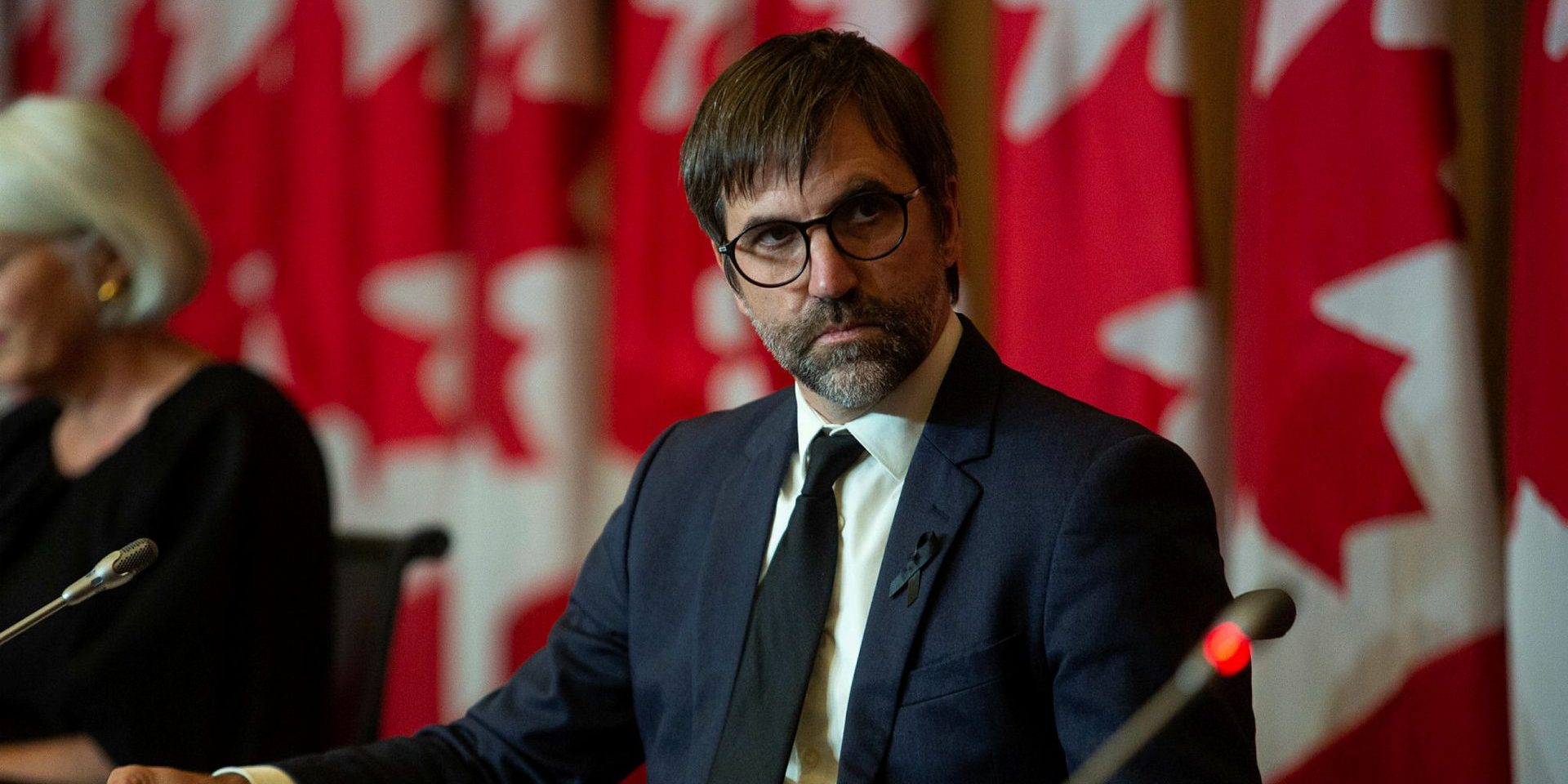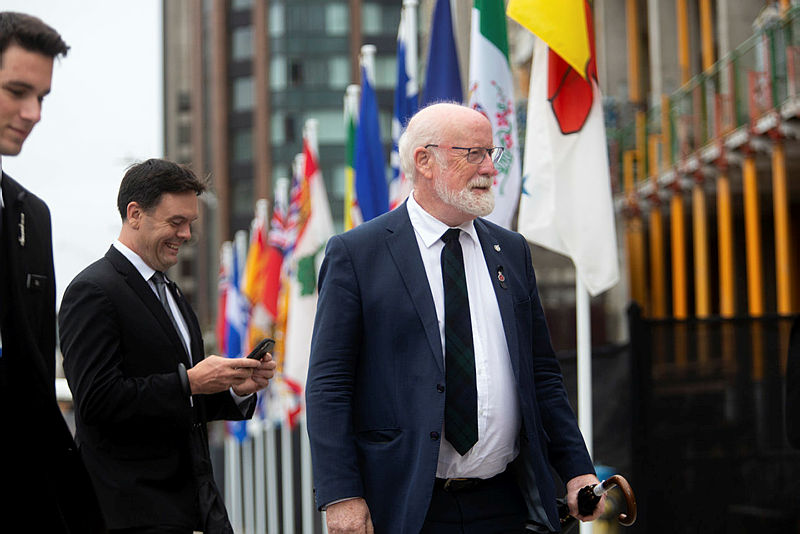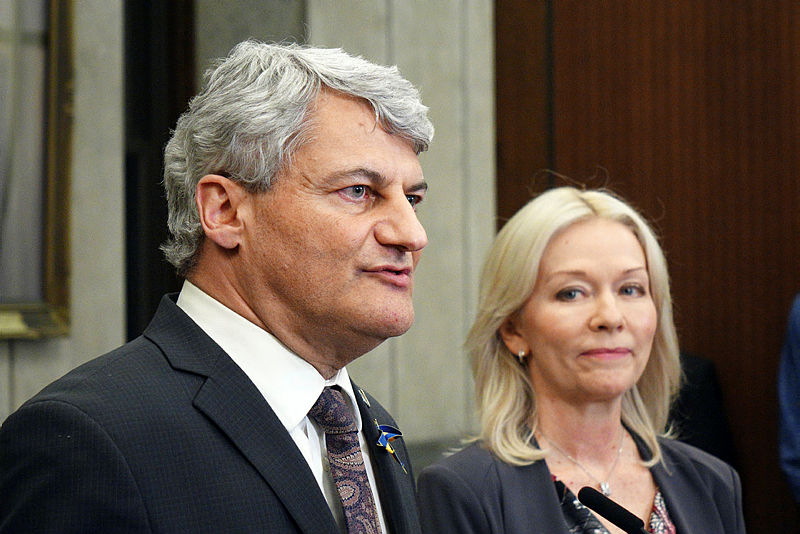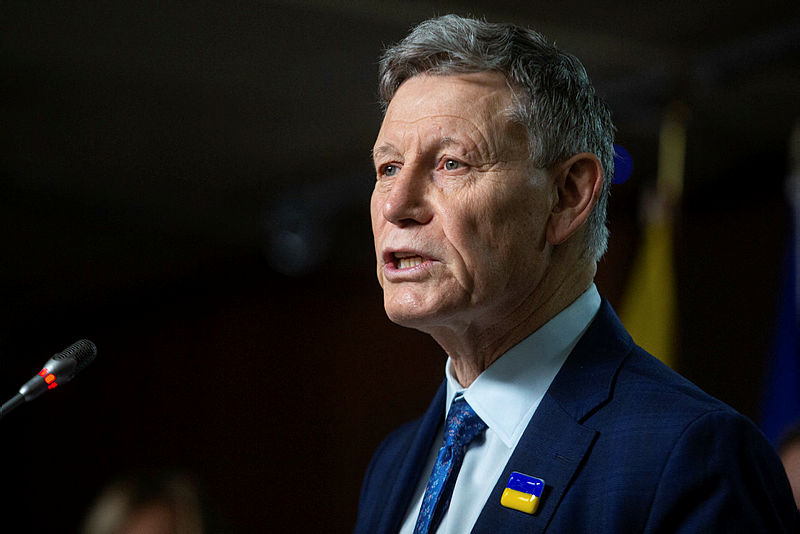Unambitious climate adaptation strategy needs clear goals for disaster mitigation, say climate experts, NDP MP

Greater emphasis on disaster relief to help protect vulnerable communities needs to be a priority in updates to Canada’s national climate adaptation strategy, according to the NDP emergency preparedness critic and climate change advocates.
“Communities that are vulnerable to floods that haven’t been flooded yet, or not recently, want to do infrastructure work, dikes, whatever, to make them more resilient to flooding. We need to have a pot of money just for that,” said NDP MP Richard Cannings (South Okanagan-West Kootenay, B.C.). “That’s another thing I’d like to see, is a real emphasis put on helping small communities that don’t have the capacity to do the planning [and] who don’t have the capacity for the funding.”
Ottawa released Canada’s first climate adaptation strategy on Nov. 24, laying out the federal government commitments to help prevent extreme heat deaths, and protect communities from climate change-related extreme weather events, including flooding and storms.
The strategy is supported by $1.6-billion in federal funding commitments. To help reduce the risk of wildfires to communities, the strategy promises $284-million to enhance community prevention and mitigation activities, support innovation in wildland fire knowledge and research, and establish a Centre of Excellence for Wildland Fire Innovation and Resilience.
Other investments promised in the strategy include $164.2-million to help ensure more Canadians have access to updated, authoritative flood-hazard maps, and $530-million to expand the Green Municipal Fund to support community-based climate adaptation initiatives, in collaboration with the Federation of Canadian Municipalities (FCM). The strategy also promises up to $489.1-million to top up the Disaster Mitigation and Adaptation Fund.
Cannings said the investments in the strategy are a good start, but not ambitious enough. Communities need up to four times the investment for disaster mitigation, or about $2-billion, he said.
Creating a pool of money for disaster adaptation and mitigation is “getting ahead of the game,” according to Cannings. As an example, he said communities in British Columbia need more funding for fire-smarting to help protect homes against wildfire damage.
The 2021 wildfire season in British Columbia was the third worst on record in terms of area burned, with 1,600 fires burning nearly 8,700 square kilometres of land, as reported in CBC News. In regards to extreme weather, Cannings also referred to November 2021, when Merritt, B.C., and several other communities in the province, experienced a disastrous triple atmospheric river event that result in widespread flooding leading to about $150-million in damages.

“It’s just so painful for communities as a whole, [and] some families in particular. It just makes real economic and human sense to invest upfront so that doesn’t happen,” said Cannings. “We have to really take this seriously and make very ambitious investments to protect not only our economy, but communities.”
The Liberal government promised that the National Adaptation Strategy, and accompanying action plans, will be updated every five years.
Ryan Ness, adaptation research director for the Canadian Climate Institute (CCI), told The Hill Times that the national adaptation strategy does what it should do “in broad strokes.” He agreed that further investment will be needed, including in disaster mitigation.
“From a big picture sense, more investment is going to be needed by the federal government in many areas. Emergency response and disaster response is almost certainly one of them,” he said. “The overall amount of funding and investment in programming the federal government is listing in the current action plan is not enough. It represents about $1.6-billion in total, but that’s drawn-out across multiple years.”
The strategy is organized into the categories of disaster resilience, health and well-being, nature and biodiversity, infrastructure, and the economy and workers. Ness said that future updates to the strategy should explain in more detail why particular objectives and targets were chosen by the federal government.
“It’s great to see quantitative, measurable, specific targets, but why they’ve chosen the targets they have is not laid out. They haven’t shown their work,” said Ness. “It’s not clear how all of the things that are implied by those targets and by those objectives will add up to the results that we want.”
The CCI is currently developing an in-depth analysis of the national adaptation strategy, which will be released on Dec. 15.
Julius Lindsay, the director of sustainable communities for the David Suzuki Foundation, said the strategy is a good start, but more needs to be done.

“I think putting in funding, and having a focus on prevention, is really important. As we’ve seen over the past number of years, disasters are happening, [and] they will continue to happen. There will be a need to address that,” he said. “I think it’s really important to focus on identifying where the risks are, and then preparing to address those risks or those things when they happen.”
Lindsay said where the national adaptation strategy could improve is by including a stronger connection to communities.
“There needs to be more in the plan about how we are going to address this at the local level, how cities and communities will be participating,” said Lindsay. “A lot of climate change adaptation happens at the local level. That’s where a lot of the risks are. Thinking about a plan like this, it needs to draw a strong connection to communities.”
The David Suzuki Foundation is among the 21 member organizations that make up the Green Budget Coalition. The coalition released a series of recommendations for the 2023 federal budget on Nov. 9 related to addressing climate change, protecting biodiversity, and creating sustainable jobs.
In the document, the coalition recommends that the federal government develop a municipal climate action fund supported by $3-billion annually until at least 2030.
Recent federal budgets have included funding to help municipalities reduce emissions, but revenue streams to fully support robust and targeted climate action remain limited and non-permanent, according to the document.
The coalition argues in the document that almost 50 per cent of Canada’s greenhouse gas emissions fall largely under the control of cities, and therefore targeted climate funding for cities, towns and communities is essential.
“Flexible and dependable climate-focused funding options, in particular climate action plan implementation, remain rare. It is critical to move away from one-off grants and toward sustained long-term funding that enables coherent community climate responses,” reads the recommendations document. “In addition, the Canada Infrastructure Bank should focus on supporting action at the community scale. This could include community energy planning for technologies such as smart grids or district energy that have the potential to be revenue generators and attract significant private capital.”
To gather further input on specific measurable targets and objectives, the national adaptation strategy was opened to the provinces, territories and national Indigenous organizations for a 90-day consultation period from the date of its release.
Conservative MP Gérard Deltell (Louis-Saint-Laurent, Que.), his party’s environment and climate change critic, told The Hill Times any announcements by the Liberal government regarding additional funding related to climate change should raise concerns. In the Climate Change Performance Index presented at COP27 in November, Canada ranked 58th out of 63 countries evaluated on their efforts to fight climate change.

“When we talk about climate change … I would say the score board of the [Liberal] government is anything but good,” said Deltell. “Based on the result, we have to be very careful when we know that the government wants to do more of what they have been doing in the last few years, with no strong results.”
“When we talked about targets, we have to keep in mind that this government failed at each and every target they table. It never reaches anything close to that,” he added.
When it comes to strengthening the national adaptation strategy, Deltell said Ottawa should look to the provinces for input.
“I think provinces are more well-equipped than us on the federal level to identify those problems, because they are on the frontlines,” said Deltell. “This is why we have to make consultations with the provinces to identify where the priorities should be.”
The national adaptation strategy represents a “whole of society” approach to climate adaptation, according to a press release from Environment Canada released on Nov. 24.
“The fight against climate change has reached our doorstep. We must not only reduce the emissions that cause climate change, we must also adapt to the changes that are upon us. Adaptation is a cost-effective and positive investment in the present and future,” said Minister of Environment Steven Guilbeault (Laurier-Sainte-Marie, Que.) in the press release. “Taking measures to adapt can save lives, avoid damage to communities, reduce economic shocks to supply chains, and spur innovative technologies and jobs. Canada’s National Adaptation Strategy, guided by the best available science and informed by diverse views and perspectives, gives us a world-leading and unified path forward.”
Liberal MP Terry Duguid (Winnipeg South, Man.), Guilbeault’s parliamentary secretary, told The Hill Times that, when it comes to climate change, “an ounce of prevention is worth a pound of cure.”

“While we think of the long term, and crisp up those longer-term targets, we know that our communities need immediate measures, and we’re acting on that as well,” Duguid. “We have the action plan [for the] shorter term, the strategy [for] the longer-term vision … and this is something that seems to be received very well by other jurisdictions. While there are large debates over pricing pollution and those issues surrounding mitigation, there is much, much more common cause around that adaptation.”
Duguid and Deltell were among the MPs who gathered with municipal leaders in Ottawa on Dec. 6 for a caucus of big city mayors, organized by the Federation of Canadian Municipalities (FCM). The caucus event brought together representatives from 23 of Canada’s largest cities to discuss issues including housing affordability and climate-related weather challenges.
Halifax Mayor Mike Savage, the chair of the caucus, said that the National Adaptation Strategy is a crucial commitment by the federal government, in a FCM press release.
“As Canada has been subject to terrible devastation from extreme weather resulting from climate change, the caucus reiterated its support for the National Adaptation Strategy as an important national framework to better protect communities from the effects of climate change,” said Savage in the press release.
Duguid told The Hill Times that communities are getting clobbered by climate change. As an example, he referenced the atmospheric river that swept across southern B.C. on Nov. 14 and Nov. 15, 2021, which dumped between 200 to 300 mm of precipitation triggering floods, mudslides and led to the deaths of at least five people.
He said that every dollar invested on climate adaptation potentially saves $15, reiterating the same comment by Guilbeault in the forward of the Adaptation Action Plan.
“We need to shore up our infrastructure. Every infrastructure project needs to be seen through the lens of adaptation because the climate is changing, and we need to adapt and change with it,” said Duguid. “We need to do more, and we recognize that, and so we very much view this as a down payment on a longer-term strategy and investments that are going to protect our infrastructure, that are going to save lives and that are going to ensure that our economy is resilient and can respond to these changes in climate.”
Jcnockaert@hilltimes.com
Canada climate change statistics
- In Canada, the national average temperature for the year 2021 was 2.1 degrees Celsius (°C) above the 1961 to 1990 reference value, making it the fifth warmest year since 1948.
- From 1948 to 2021, there is a trend in annual average temperature departures, showing 1.9°C of warming over that period.
- 2021 saw a historic heat wave hit the western parts of Canada in June. On June 29, a new Canadian record high temperature of 49.6°C (nearly 24°C higher than normal) was set in the village of Lytton in British Columbia. The heat dome that affected the province over 2 weeks was responsible for over 1,000 new local daily temperature records and contributed to an early and above average wildfire season. This extreme heat resulted in 619 deaths in British Columbia.
- Nine of the 10 warmest years have occurred during the last 25 years, with 2010 being the warmest on record (3.0°C above the 1961 to 1990 reference value).
- The annual average temperature in Canada has increased at roughly twice the global mean rate. Patterns are different across regions of the country, however. Temperatures have increased more in northern Canada than in southern Canada.
Source: Environment Canada
- According to the Canadian Climate Institute, by 2025 climate impacts will slow Canada’s economic growth by $25-billion annually, which is equal to 50 per cent of projected Gross Domestic Product growth.
- By 2030, the average annual losses from disasters is forecast to reach $15.4-billion.
- Flooding is Canada’s costliest hazard, with average residential costs of $2.9-billion per year.
- Every dollar spent on adaptation measures saves $13 to $15. The Liberal government estimates that implementing new flooding and wildfire guidelines and standards for new construction could save Canada an estimated $4.7-billion a year, or savings of nearly $12 per one dollar invested.
Source: Environment Canada






 LICENSING
LICENSING PODCAST
PODCAST ALERTS
ALERTS













